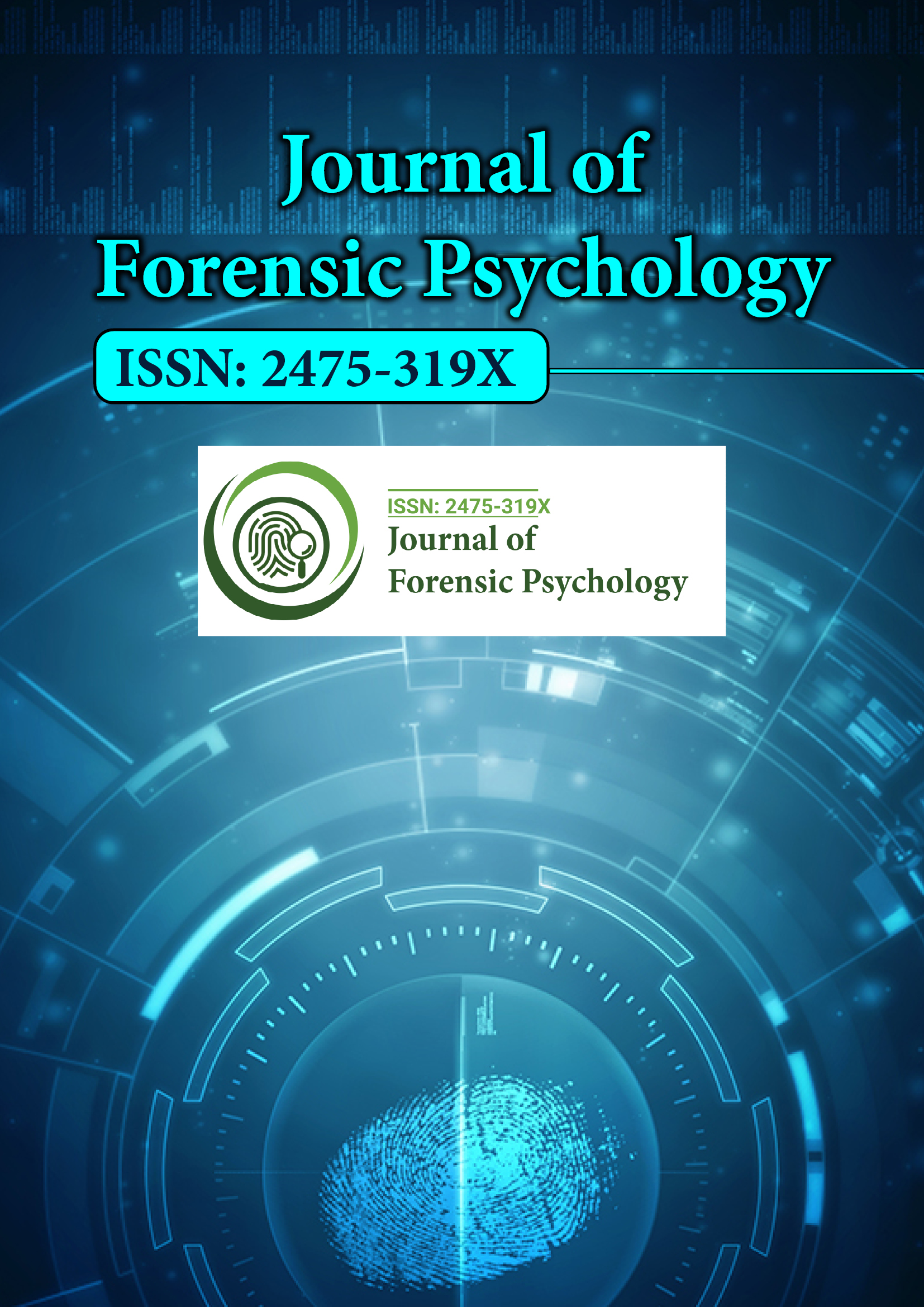Indexed In
- RefSeek
- Hamdard University
- EBSCO A-Z
- Publons
- Geneva Foundation for Medical Education and Research
- Euro Pub
- Google Scholar
Useful Links
Share This Page
Journal Flyer

Open Access Journals
- Agri and Aquaculture
- Biochemistry
- Bioinformatics & Systems Biology
- Business & Management
- Chemistry
- Clinical Sciences
- Engineering
- Food & Nutrition
- General Science
- Genetics & Molecular Biology
- Immunology & Microbiology
- Medical Sciences
- Neuroscience & Psychology
- Nursing & Health Care
- Pharmaceutical Sciences
Commentary - (2021) Volume 6, Issue 9
A Brief Note on Schizophrenia
Elena Alighieri*Received: 03-Sep-2021 Published: 24-Sep-2021, DOI: 10.35248/2475-319X.21.6.188
Description
Schizophrenia is a psychological problem portrayed by consistent or backsliding scenes of psychosis. Significant side effects involve illusions (ordinarily hearing voices), dreams, neurosis, and disrupted reasoning. Different side effects involve social withdrawal, diminished enthusiastic articulation, and lack of concern. Indications commonly come on steadily, start in youthful adulthood, and large will not ever resolve. There is no target indicated test; the determination utilized to depict noticed conduct which may come from various causes. Other than noticed conduct, specialists will likewise take a set of experiences that incorporates the individual's accounted for encounters, and reports of others acquainted with the individual, when making an analysis. To determine somebody having schizophrenia, specialists should affirm that side effects and useful disability are available for quite a long time (DSM-5) or one month (ICD-11). Many individuals with schizophrenia have other mental issues, particularly substance use problems, burdensome issues, uneasiness problems, and obsessive-compulsive disorder.
Schizophrenia influences various individuals in various ways, yet there are some common indications. These include:
Confused discourse that is difficult for others to comprehend.
Lack of facial expression.
Lack of enthusiastic articulation.
Lack of inspiration.
Difficulty concentrating.
Psychosis, such as delusions and hallucinations.
Before experiencing these side effects, an individual might show up:
Out of sorts.
Anxious.
To lack focus.
The symptoms of schizophrenia in youngsters are similar to those in adults, but they can have various implications.
The symptoms include:
Psychosis.
Delusions.
Auditory hallucinations, in which the child hears voices.
Developmental delays.
Language difficulties.
Difficulty adapting to the everyday schedule social connections.
Trouble communicating or perceiving feelings, known as the "level effect".
Many individuals with schizophrenia do not know that they are unwell. Hallucinations and delusions may appear very real to an individual who is experiencing them. This may make it difficult to persuade the person to take medicaments. They might fear the side effects or believe that the medication will distress them.
Schizophrenia as a rule seems when an individual is in their late teens or older yet it can likewise influence children.
Risk factors include: Genetic inheritance, environmental factors include- trauma during birth, malnutrition before birth, viral diseases, and psychosocial factors, and substance use.
Schizophrenia is a lifelong condition, yet viable treatment can assist an individual with dealing with the indications, forestall backslides, and stay away from hospitalization.
Every individual’s experience may be unique, and a specialist will customize the treatment to suit the person.
Some potential treatment alternatives include:
Antipsychotic drugs: These can be intended for day-to-day use or for less regular use if the individual chooses injectable medicaments, which may endure as long as 90 days between infusions (depending on the medicament).
Counseling: This can assist an individual with creating adapting abilities and seek after their life goals.
Coordinated special protection: This coordinates prescription, family involvement, and training administrations in a holistic methodology.
Some common medicaments used for schizophrenia are: Risperidone, olanzapine, quetiapine, ziprasidone, clozapine, and haloperidol.
The above-mentioned drugs have adverse effects, including neurological manifestations and weight gain. Newer medications may have less serious side effects, however.
It is basic for an individual to proceed with their treatment plan, regardless of whether the symptoms improve. In the event that an individual quits taking a prescription, the side effects might return.
There is no diagnostic test to evaluate for schizophrenia. A specialist will diagnose it by seeing how the individual acts. They will likewise get some information about their set of experiences of physical and emotional well-being.
All things considered, they might prescribe a few tests to preclude other potential reasons for the indications, like a growth, cerebrum injury, or another psychological well-being condition, like a bipolar issue.
To diagnose schizophrenia, a specialist will utilize the standards from the Diagnostic and Statistical Manual of Mental Disorders, Fifth Edition. This manual gives standards for diagnosing an extensive scope of mental well-being conditions.
As per the measures, an individual should have somewhere around two of the accompanying side effects for a month: Delusions, hallucinations, disorganized discourse, grossly confused or mental conduct, contradictory side effects, like the absence of talk, intensive evenness, or lack of inspiration.
They should likewise experience extensive debilitation in their capacity to work in everyday scheduled work, to communicate with others, or to complete self-care undertakings, and they should have side effects that endure for completely a long time or more.
The manifestations should likewise not be because of another ailment, a recommended prescription, or the utilization of different substances.
Citation: Alighieri E (2021) A Brief Note on Schizophrenia. J Foren Psy.6:188.
Copyright: © 2021 Alighieri E. This is an open access article distributed under the terms of the Creative Commons Attribution License, which permits unrestricted use, distribution, and reproduction in any medium, provided the original author and source are credited.

